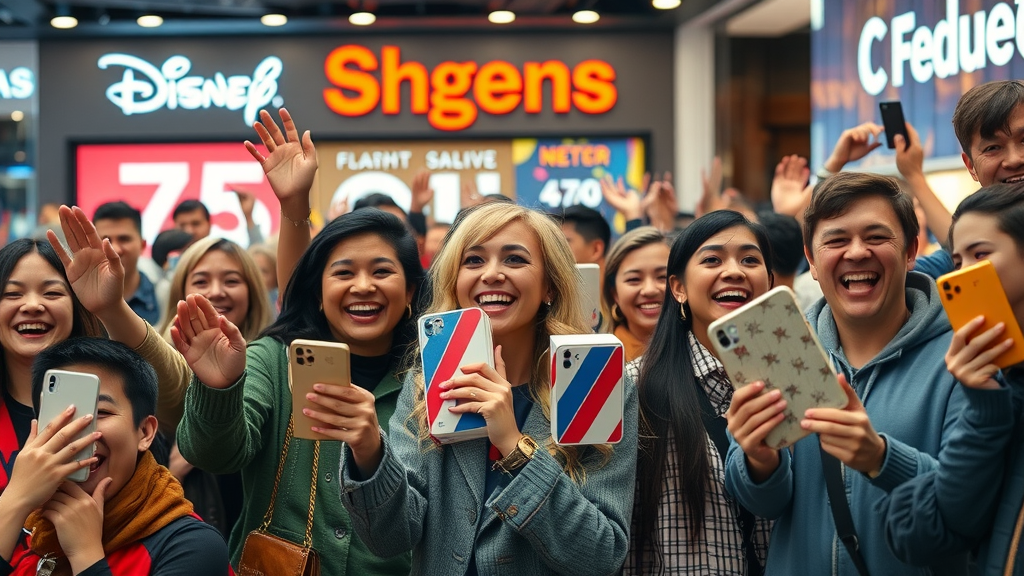Hook: Imagine skyrocketing your business profitability by up to 95%—simply by focusing on a single key factor: brand loyalty. While many companies spend heavily to attract new buyers, the true, often-overlooked engine behind remarkable business growth is not just in acquiring customers, but in making them brand loyal for the long run. Dive into the secrets behind the numbers that power the world’s leading brands and uncover how loyalty isn’t just good—it's transformative.
A Startling Look at Brand Loyalty: The Power Behind the Numbers
Brand loyalty isn’t just a marketing buzzword—it’s the front line of business growth and resilience. Studies consistently show that increasing customer retention by just 5% can boost profits by 25% to 95%. Why is this so powerful? Loyal customers don’t just make repeat purchases; they become ambassadors for your brand, advocating for your product or service within their networks and generating word-of-mouth momentum that advertising dollars can’t buy. This loyal customer base underpins a sustainable business model and shields you from the volatility of shifting market trends. In a marketplace flooded with choices, the ability to create and nurture brand loyal followers is a true competitive advantage for any company hoping to grow and lead.
Consumers today are bombarded with endless options via digital, social media, and in-person experiences. Yet, companies that focus on building brand loyalty thrive—because loyal customers don’t just stick around, they spend more, forgive occasional slip-ups, and help attract others. As we journey through the why and how of brand loyalty, it becomes clear: for forward-thinking businesses, investing in the customer experience pays extraordinary dividends by shaping unwavering loyal customers who drive sustainable growth.
While building brand loyalty is essential, it’s equally important to amplify your brand’s presence in the marketplace. If you’re looking to accelerate recognition and stand out from competitors, consider exploring proven strategies to boost brand awareness quickly and effectively as a complementary approach.

“Did you know that increasing customer retention by just 5% can boost profits by 25% to 95%? The secret: unwavering brand loyalty.” — Bain & Company
What You'll Learn About Brand Loyalty
- Why brand loyalty drives sustainable business growth
- The difference between brand loyal customers and casual buyers
- Key strategies for building brand loyalty
- Real-world examples of brand loyalty transformation
- How customer experience, satisfaction, and service fuel customer loyalty
- Actionable steps to measure and foster loyal customers
Understanding Brand Loyalty: Definition and Impact
What Is Brand Loyalty?
Brand loyalty is a customer’s commitment and preference for a specific brand, resulting in frequent and repeat purchases even when alternative products or services exist. Unlike casual buyers, a brand loyal customer chooses a brand based on emotional connection, consistent positive experiences, and trust rather than price or convenience alone. This attachment often leads them to advocate for the brand, sharing their satisfaction with friends and family both offline and on social media. The bond goes deeper than just liking a product—it’s about believing in a company’s mission, its values, and how it makes customers feel valued at every interaction.
From an operational perspective, brand loyalty shows in purchase behaviors—customers will stand in line for new releases, subscribe to loyalty programs, and overlook minor hiccups because their overall experience is positive. This isn’t limited to just retail or consumer-facing brands; in B2B, brand loyalty means clients renew contracts, recommend your services, and collaborate on long-term growth. Businesses with high brand loyalty consistently outperform their competitors by building a loyal customer base that withstands the test of time and market shifts.

How Brand Loyalty Fuels Business Growth
When companies successfully cultivate brand loyalty, they unlock a cycle of growth, where loyal customers not only return for more—often becoming higher-value clients over time—but also become vocal advocates who help acquire new business without advertising costs. This steady customer base allows companies to refine processes, forecast demand, and invest in innovation rather than constantly worrying about recovering lost audiences. The relationship is symbiotic: customers feel understood and appreciated, while the business benefits from a stable revenue stream and organic promotional growth.
Consider companies like Apple or Amazon Prime—these brands have mastered building brand loyalty by consistently delivering superior customer experiences, tailored communication, and exclusive perks that make customers feel part of something special. The effect is exponential. Not only do these companies retain their existing customers, but they also pave the way for new, loyal customers who aspire to join the club. The result? Increased profitability, lower marketing spend, and a perpetual cycle of repeat purchase and advocacy that powers ongoing business expansion.
The Evolution of a Brand Loyal Customer
The journey from first-time buyer to brand loyal customer doesn’t happen overnight. Initially, a customer might be attracted by a compelling ad, a strong value proposition, or a unique product or service. If their expectations are met—or exceeded—they make a repeat purchase, and if each interaction reinforces their positive perception, trust begins to build. Over time, consistent experiences, personalized engagement, and reliable service transform these repeat buyers into advocates who not only maintain their loyalty but champion your brand to others.
Market research indicates that establishing an emotional connection at every stage—pre-purchase, purchase, and post-purchase—is what fortifies this loyalty. Brands that actively gather feedback, respond to concerns, and adapt their offerings demonstrate that they place the customer at the center of their business model, making customers feel heard and valued throughout their journey. As their relationship deepens, these brand loyal customers gain intrinsic value from the brand experience, which eclipses transactional loyalty based on discounts or sporadic incentives.
“Customers who are loyal to a brand generate more repeat purchase opportunities—and advocacy you can’t buy.” — Deloitte Insights
The Business Case for Brand Loyalty
Repeat Purchase Patterns: Why Loyal Customers Are Invaluable
When it comes to long-term profitability, attracting new buyers is only half the battle—the true engine of business growth comes from recurring revenue generated by loyal customers. Repeat purchases serve as a testament to the strength of your brand. For instance, loyal customers don’t just visit during a sale; they come back again and again, often increasing their basket size each time. Brands like Starbucks and Amazon Prime have observed that loyal members of their rewards program make repeat purchases more frequently, remain engaged with exclusive deals, and are less price-sensitive than new or infrequent buyers.
The value of this repeat business is profound. According to the Harvard Business Review, loyal customers are five times more likely to make repeat purchases and four times more likely to refer the brand to their friends and family. For brands, this means less money spent on marketing to re-acquire the same customer base and more opportunities to develop lasting relationships that drive future sales. The data is clear: companies investing in nurturing loyal customer relationships see a measurable impact on their bottom line, making repeat purchase behavior one of the most important benchmarks for business sustainability.
Competitive Advantage Through Loyal Customers
A strong brand with a loyal following enjoys a powerful competitive advantage. Unlike product innovation or pricing tactics—which can be easily replicated—brand loyalty creates a durable, hard-to-copy moat. These customers are less likely to be swayed by competitors, more forgiving of occasional slip-ups, and eager to participate in new programs or product launches. When your customers feel an emotional connection to your brand, their loyalty becomes a built-in defense against market disruptions or new entrants.
Companies that prioritize loyalty don’t just win on metrics; they enjoy intangible benefits such as higher customer morale, greater employee engagement, and a reputation for reliability in the marketplace. This brand loyal customer base allows for faster recovery from crises and smoother scaling of new initiatives. As a result, business owners find themselves investing intelligently for growth rather than constantly reacting to the competition.

Brand Loyalty vs. Customer Loyalty: Subtle but Crucial Differences
While brand loyalty and customer loyalty might sound synonymous, they are distinct concepts—and understanding the difference is crucial for business success. Brand loyalty is all about the emotional connection and allegiance to a particular company, regardless of minor fluctuations in price or feature. It’s rooted in shared values and experiences, driving customers to actively choose a specific brand over competitors even when alternatives are readily available. In contrast, customer loyalty can sometimes be transactional—shaped primarily by convenience, incentives, or habit. These customers are likely to jump ship if a competitor offers slightly better terms or a newer product.
Truly successful businesses aim to foster brand loyalty over mere customer loyalty. This means cultivating long-term relationships through superior customer service, consistent quality, and emotional resonance rather than simply chasing fleeting sales. By doing so, brands create deeper bonds with their audience and secure a loyal customer base that supports ongoing growth, whatever the external landscape.
| Feature | Brand Loyalty | Customer Loyalty | Repeat Purchases |
|---|---|---|---|
| Focus | Emotional connection & advocacy | Transactional benefits & incentives | Frequency of buying, not always tied to loyalty |
| Stability | High, resilient to competition | Variable, based on offers | Low to moderate |
| Long-Term Value | Highest: repeat purchase AND advocacy | Moderate: repeat purchase, less advocacy | Unpredictable |
| Driven By | Brand values, customer experience | Convenience, discounts | Need, price, convenience |
Building Brand Loyalty: Strategies That Deliver Results
Enhancing Customer Experience to Foster Brand Loyalty
The cornerstone of building brand loyalty is an exceptional customer experience. From a user’s first website visit to post-purchase support, every interaction shapes their perception. Companies excelling in brand loyalty invest in intuitive design, responsive service, and seamless shopping experiences—whether online or in-store. These brands understand that customers want to be understood, valued, and treated as individuals, not just transactional opportunities.
To rise above the noise, leading brands personalize touchpoints, remember customer preferences, and react quickly to feedback. A thoughtful, proactive approach to customer communication makes customers feel genuinely appreciated and remembered. A positive emotional connection, built over multiple touchpoints, increases the likelihood that casual buyers become brand loyal advocates who return again and again, driving sustained growth.

Customer Satisfaction and Service as Foundations for Brand Loyalty
Delivering consistent customer satisfaction is fundamental to cultivating brand loyalty. Brands that go beyond the basics—offering prompt, insightful support and resolving issues swiftly—show customers that their needs are a priority. Whether it’s a simple question about a product or service, or a more complex problem, exceptional customer service leaves a lasting impression. Satisfied customers are not only more likely to return but will also speak positively about the brand to others.
Brands need to invest in employee training, empower staff to solve problems, and regularly review customer service interactions. When customers earn rewards, receive personalized attention, or feel that their concerns are genuinely addressed, they develop emotional bonds that drive loyalty. Ultimately, satisfied customers become vocal advocates and help to retain customer interest, generating organic growth through their positive experiences and endorsements.
Using Personalization to Build a Strong Brand Loyal Base
Personalization is a powerful tool in the quest to nurture a loyal customer base. From tailored offers in loyalty programs to dynamic online recommendations, leveraging data and technology helps businesses anticipate and address individual customer preferences. A brand that remembers a shopper’s previous purchases, recommends relevant products and services, or acknowledges a customer’s birthday with exclusive deals makes customers feel special and understood.
Companies utilizing advanced customer relationship management (CRM) tools can segment their audiences, craft unique customer journeys, and deliver communications that resonate on a personal level. This focus on thoughtful, data-driven engagement transforms one-time buyers into brand loyal proponents who value their unique relationship with your company. The ROI? Increased repeat purchases, higher engagement, and a brand image associated with care and attention to detail.

Leveraging Feedback for Effective Customer Retention
The journey to retain customer interest and loyalty isn’t complete without active listening and iterative improvement. Collecting and acting on customer feedback demonstrates a brand’s commitment to continuous improvement. Regularly surveying customers, reading online reviews, and monitoring social media sentiment offer invaluable insights that can drive product enhancements, service innovations, and marketing tweaks. Brands that “close the loop” by communicating how feedback has shaped company actions make customers feel valued and respected.
This iterative process is key to maintaining and growing a brand loyal customer base. From rewards programs and personalized offers to ensuring consistent product or service quality and maintaining open channels for communication, the brands that stay closest to their customers are those that thrive. Customers want to see that their voices matter—and when they do, they reward brands with loyalty that competitors can’t easily disrupt.
- Reward programs
- Personalized offers
- Consistent product or service quality
- Effective customer communication
Case Studies: Brand Loyalty in Action
How Leading Brands Create Loyal Customers
Top-performing global brands like Apple, Nike, and Amazon provide gold-standard examples of cultivating brand loyalty. Apple’s combination of design, exclusivity, and ecosystem continuity inspires customers to remain brand loyal through every iteration of their product or service. Nike leverages inclusive branding and emotional storytelling, while Amazon’s focus on convenience, time-saving solutions, and the ever-popular Amazon Prime loyalty program creates a loyal customer base that rarely strays to competitors.
Each of these brands invests heavily in understanding what makes their customers tick. By building personalized experiences, offering exclusive deals, and continuously soliciting customer feedback, they transform transactional interactions into lasting relationships. Their successes underscore a powerful business truth: a loyal customer isn’t just a repeat buyer—they’re an ambassador resource, providing organic growth through word-of-mouth, social media advocacy, and even market research. When companies make customers feel central to their mission, they generate loyalty that’s resilient and enduring.

Transforming Customer Experience for Long-term Retention
It’s not just the product or service itself that drives retention—it's the entire customer journey. Zappos, for example, carved out a niche with legendary customer service, free return shipping, and delightful shopping experiences. Starbucks listens to its loyal customer base by regularly updating the menu with new offerings inspired by feedback and loyalty program usage patterns. Meanwhile, Netflix curates an increasingly personalized digital experience, ensuring each user finds compelling content that encourages them to stay and engage longer.
These case studies highlight the importance of integrating loyalty into every aspect of operations. The brands that last are those who treat every touchpoint as an opportunity to reinforce emotional connection, build trust, and demonstrate value. By making customers feel appreciated and heard, companies move from transactional ties to lasting brand loyalty—an investment with powerful, compounding returns.
“Great brands don’t just sell products—they create relationships.”
Practical Steps for Building Brand Loyalty
Building Brand Loyalty Through Consistency
Consistency is key to effective building brand loyalty. From branding elements to service levels and product reliability, consistency reassures customers that they’ll have a familiar, positive experience every time. Delivering on brand promises across all channels—online, in-store, on social media—reinforces trust and sets clear expectations, which are essential for turning casual buyers into loyal customers.
This consistency covers everything from packaging and delivery speed to the tone of customer interactions. Brands that do this well create a recognizable presence that stands out, increases repeat purchases, and minimizes friction in the customer journey. Over time, customers form habits around the brand, boosting both emotional and behavioral loyalty while driving sustainable business growth.
Effective Communication and Making Customers Feel Valued
Communication is at the heart of all strong relationships, and the bond between a brand and its customers is no different. Clear, timely, and authentic communication helps establish transparency, manage expectations, and solve potential issues before they escalate. More importantly, when brands take the time to recognize special occasions, personalize offers, or simply say thank you, they make customers feel special and valued beyond the transaction.
Customers are more likely to make repeat purchases when they’re seen and heard by a company. Regular updates about new products, special deals, or changes in policy should always be coupled with opportunities for customers to share their feedback. When brands open a dialogue—through emails, social media, or customer support—they foster trust and build the emotional connections that drive loyalty.

Empowering Teams for Better Customer Service
Frontline employees are the face and voice of your brand. Empowering them to solve problems, make decisions, and deliver exceptional customer service is vital for creating meaningful, loyalty-boosting experiences. This empowerment requires both training and autonomy—teams must understand brand values and have the latitude to go the extra mile when customer situations demand it.
Happy, motivated staff are more likely to create memorable interactions that leave customers feeling satisfied and cared for. Some of the most beloved brands invest heavily in employee engagement, recognizing that a committed workforce is an invaluable loyalty-building asset. By consistently rewarding exceptional service and promoting a culture of customer-centricity, brands ensure that every customer touchpoint is designed to drive brand loyalty.
Measuring & Monitoring Customer Satisfaction and Retention
To ensure the success of your brand loyalty strategies, continuous measurement is essential. Brands should track key performance indicators (KPIs) like Net Promoter Score (NPS), customer satisfaction surveys, repeat purchase rates, and retention percentages. Investing in data analytics platforms allows you to identify what’s working and adjust your approach based on real-world insights. This proactive monitoring ensures that your brand remains agile enough to meet evolving customer needs while maintaining a strong, brand loyal customer base.
Additionally, using CRM and loyalty program analytics helps organizations predict trends, preempt churn, and develop tailored initiatives for high-value customer segments. Regularly benchmarking against competitors and your own past performance enables you to continually refine your approach—transforming satisfaction and retention into powerful, enduring brand loyalty.
People Also Ask About Brand Loyalty
What are the 4 C's of customer loyalty?
Answer
The 4 C’s of customer loyalty are Customer Experience, Communication, Consistency, and Convenience. Brands that deliver positive experiences at every touchpoint, maintain clear and personalized communication, offer dependable products or services, and provide hassle-free convenience are more likely to foster a loyal customer base. By focusing on these four pillars, companies can make customers feel valued and inspired to make repeat purchases.
Which one is an example of brand loyalty?
Answer
An example of brand loyalty is a customer who always buys the same brand of running shoes, like Nike, even when trying new models or when another brand is on sale. This customer may recommend Nike to friends and stay engaged in the brand’s community or reward programs—demonstrating an emotional connection and preference for the brand beyond price or convenience.
What are 2-3 ways a brand has increased your loyalty?
Answer
Brands increase loyalty by offering personalized experiences, rewards programs, and outstanding customer service. For example, Amazon Prime uses exclusive deals and fast shipping to keep customers coming back, while Starbucks’ mobile app remembers favorite orders and provides free birthday drinks as part of its loyalty program. Personalized messages and attentive support after each purchase are other powerful drivers of brand loyalty.
What are the two types of brand loyalty?
Answer
The two main types of brand loyalty are behavioral loyalty and attitudinal loyalty. Behavioral loyalty is demonstrated by repeat purchases and regular engagement, often due to habit or rewards. Attitudinal loyalty is deeper, grounded in an emotional attachment to the brand, its values, and its overall experience. The most loyal customers show both types—returning often and advocating for the brand.
Brand Loyalty in the Digital Age

Using Social Media and Digital Touchpoints
Modern brand loyalty strategies rely heavily on digital channels. Social media enables brands to engage, listen, and respond to customers in real-time—building relationships that transcend the point-of-sale. Contests, storytelling, influencer campaigns, and direct feedback opportunities all strengthen emotional connections with customers, making them feel involved in the brand’s journey. Consistent interaction through digital touchpoints ensures your brand is top-of-mind, while creating opportunities for loyalty program memeberships, referrals, and user-generated content that further boost trust and visibility.
Additionally, digital platforms let companies personalize offers, automate communication, and gather insights about customer preferences faster than ever. This data-driven approach allows brands to fine-tune their messaging and loyalty strategies for even greater impact, empowering each customer to become a dedicated advocate through targeted digital experiences.
Brand Loyalty Metrics: Tools and KPIs

To effectively manage and grow brand loyalty in the digital age, brands must measure and analyze relevant data points regularly. Common KPIs include Net Promoter Score (NPS), Customer Lifetime Value (CLV), redemption rates in loyalty programs, engagement metrics, and the percentage of repeat customers. Utilizing analytics tools and dashboards, companies can spot trends—such as declining engagement or emerging customer preferences—before they become problems.
By establishing clear benchmarks and continuously tracking performance, businesses can refine their loyalty strategies, optimize customer touchpoints, and identify which aspects of their loyalty program deliver the most value. Data transparency also allows brands to demonstrate improvement and share success stories—reinforcing the emotional connection with customers who want to see their feedback and loyalty recognized.
Overcoming Challenges in Building Brand Loyalty
Despite its advantages, building brand loyalty is not without hurdles. Customers have high expectations for personalization, fast responses, and consistent quality—making even minor lapses potentially damaging. Additionally, digital savvy buyers are quick to share negative experiences online, amplifying fallout from mistakes. To overcome these hurdles, companies need nimble processes, proactive crisis management, and a willingness to iterate based on real feedback. Empowering teams, embracing transparency, and quickly addressing mistakes show customers that the brand is committed to improvement—key traits for sustaining long-term loyalty in a competitive digital landscape.
Lastly, companies must continuously innovate and adapt—what worked to retain customer loyalty yesterday may be insufficient tomorrow. Brands that encourage open dialogue, foster community, and create a consistent, memorable customer experience will win in the marathon of brand loyal growth.
Key Takeaways: Why Brand Loyalty Matters

- Sustained growth comes from brand loyalty, not just customer acquisition
- Loyal customers are advocates, not just repeat buyers
- Brand loyalty improves customer satisfaction, retention, and overall business value
Frequently Asked Questions on Brand Loyalty
What makes a customer brand loyal?
A customer becomes brand loyal when their experiences with a company consistently exceed expectations and create a meaningful emotional connection. Brand loyal customers return not just for the product or service itself, but because the brand aligns with their values and consistently delivers quality, recognition, and trust in every interaction.
How does brand loyalty improve customer retention?
Brand loyalty directly enhances customer retention by making customers less likely to switch brands or be influenced by competitors. Loyal customers feel valued, experience reliable service, and enjoy personalized rewards, which collectively encourage them to stay with the brand for the long term.
Can brand loyalty be measured quickly?
Yes, brand loyalty can be measured through tools like Net Promoter Score (NPS) surveys, repeat purchase tracking, and engagement analytics from loyalty programs and digital touchpoints. While building loyalty takes time, these quick measurements offer actionable insights into customer sentiment and business performance.
What impact does customer service have on brand loyalty?
Customer service plays a crucial role in shaping brand loyalty. Exceptional support makes customers feel heard, appreciated, and confident in their brand choice. Poor service, on the other hand, can quickly dissolve even longstanding loyalty, underlining the need for consistent, high-quality engagement at every step.
Is brand loyalty equally important for all industries?
While the path to brand loyalty may differ by industry, its importance is universal. Whether B2B or B2C, retail or technology, all businesses benefit from loyal customers who generate repeat revenue and act as advocates. The magnitude of impact may vary, but the strategic value of loyalty remains immense across all sectors.
Conclusion: Is Brand Loyalty the Ultimate Secret to Long-Term Business Growth?
The evidence is in: brand loyalty isn’t just the secret—it’s the engine for long-term, sustainable business growth. In a world of choices, your most valuable asset is a loyal customer base that believes in your brand, advocates for it, and chooses it—again and again.
If you’re ready to take your business to the next level, remember that brand loyalty is just one piece of a much larger puzzle. To truly future-proof your company, it’s essential to master every aspect of branding—from crafting a compelling identity to protecting your reputation in a crowded market. For a comprehensive roadmap on building, growing, and safeguarding your brand, explore The Ultimate Guide to Branding. This resource is packed with actionable insights and advanced strategies to help you create a brand that not only inspires loyalty but also stands the test of time.
For more information read The Ultimate Guide to Branding: Build, Grow, and Protect Your Brand.
 Add Row
Add Row  Add
Add 




Write A Comment